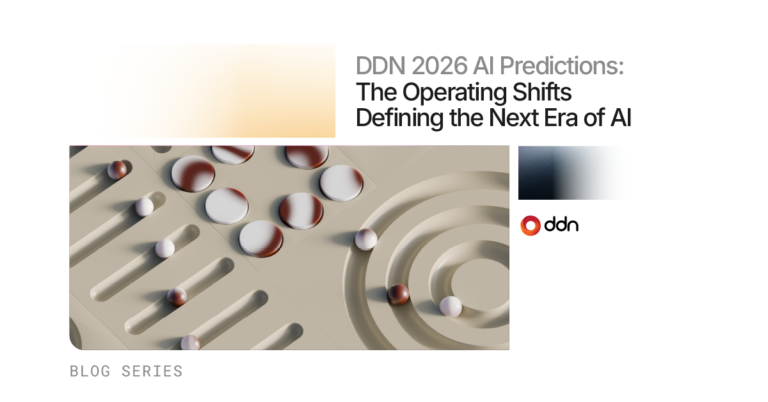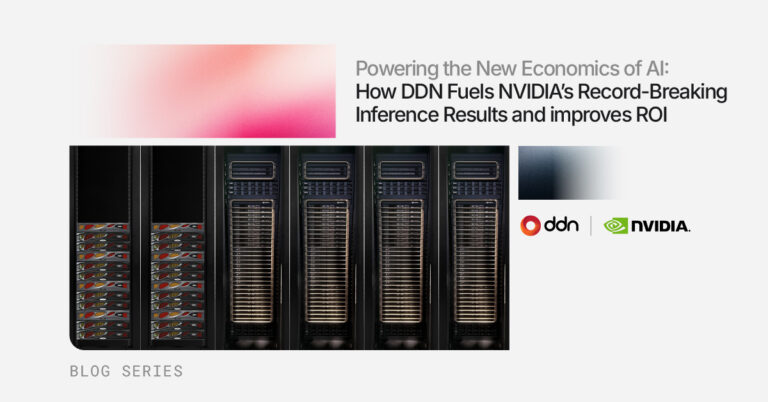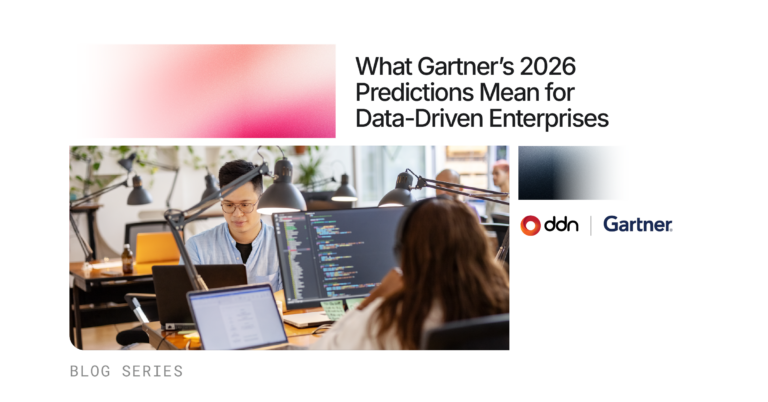Deloitte recently sounded the alarm in their 2025 Tech Trends report, Hardware is Eating the World: skyrocketing power consumption, idle GPUs, and legacy architectures are threatening to stall enterprise AI adoption. But for those working deep in AI infrastructure, none of this is surprising.
For anyone working deep in AI infrastructure, this isn’t news—it’s validation.
The truth is, most enterprise infrastructure was never built for modern AI. It wasn’t designed to move petabytes in real time. To power thousands of GPUs in parallel. To operate at the edge. Or to do it all sustainably.
And now, those architectural gaps are no longer invisible—they’re expensive. They show up as underutilized GPUs, runaway power bills, egress costs, and AI teams constantly waiting on data.
The good news? You don’t need to start over. By understanding where traditional infrastructure is falling short—and where new, AI-optimized approaches are emerging—you can unlock serious performance and cost advantages.
This guide breaks down 7 critical areas where legacy infrastructure is quietly holding enterprises back—and how to overcome each one with purpose-built, scalable systems.
1. Why Are AI Models Driving Up Power Costs and How Can You Fix It?
The problem:
The energy footprint of AI is exploding. Training and running large models, especially LLMs, requires immense compute power, and in turn, massive electricity. Deloitte reports AI-related data center usage could rival that of countries like Sweden or Germany by 2026.
And we’re already seeing the implications. Oracle’s recent $30B deal to host OpenAI infrastructure has become a flashpoint, with the future of data centers now under scrutiny for their massive energy requirements and long-term sustainability risks (Data Centre Magazine).
Not only is this a climate concern, it’s a cost concern. Power, cooling, and carbon exposure are now limiting factors to scale.
How to break through:
- Review your PUE (Power Usage Effectiveness) and set aggressive improvement targets (1.2–1.5 is best-in-class).
- Shift workloads to cloud regions powered by renewables: Oracle, for example, has committed to 100% renewable energy across all OCI data centers by 2025.
- Explore on-prem energy solutions including Lenovo’s industry-leading liquid cooling systems, which reduce both power consumption and water usage while enabling high-density AI workloads.
- Evaluate innovative cooling and thermal storage solutions like solar-thermal platforms from Exowatt or immersion cooling designs.
Bottom line: If your infrastructure isn’t energy-aware, your AI won’t be able to scale economically or operationally.
2. How Can You Maximize GPU Utilization for AI Workloads?
The problem:
The AI world is GPU-hungry but not GPU-efficient. While companies scramble to acquire more GPUs, many are failing to fully utilize the ones they already have. According to LinkedIn, industry leaders like HP, enterprise GPU utilization may sit as low as 15–20%.
That means thousands—or even millions—of dollars’ worth of GPUs are sitting idle, waiting on data. Why? Because legacy infrastructure can’t feed them fast enough. Storage bottlenecks, poor workload orchestration, and slow IO pipelines turn cutting-edge compute into expensive paperweights.
How to break through:
- Benchmark GPU utilization across teams and workloads.
- Deploy storage systems built for parallel access, high throughput, and AI-scale data movement.
- Implement job scheduling and orchestration tools that maximize active GPU cycles and feeding them consistently with the right data at the right time.
Think of it this way: tripling your GPU utilization is like tripling your compute capacity—without buying a single extra chip.
Ready to see the hidden cost of idle GPUs?
Use our GPU Efficiency ROI Calculator to find out what you’re leaving on the table—and how to fix it.
3. Why Should You Move AI to the Data Instead of the Reverse?
The problem:
Legacy infrastructure assumes data needs to be centralized before it can be processed. But today, data is everywhere and it’s growing fast. From autonomous vehicles and retail stores to hospitals and manufacturing floors, organizations are generating petabytes of data at the edge.
Trying to move all of that data to a central cloud or core location creates huge problems: excessive network costs, latency delays, compliance risks, and operational drag. As Dell’s Manish Mahindra put it, “It’s better to bring AI to the data, rather than bring data to the AI.”
How to break through:
- Map your data gravity—identify where data is generated and where it truly needs to be processed.
- Deploy AI inference directly at the edge—on devices, gateways, or local compute nodes—to reduce transfer and response time.
- Use metadata-aware infrastructure that can scan, classify, and extract insights without moving the full dataset—enabling smart filtering, routing, and localized processing.
Modern edge platforms understand your data contextually. By making metadata part of the orchestration layer, you unlock value instantly—no costly transfer required.
4. Why the Next Stage of AI Success Builds on Cloud, Not Away From It
The challenge:
Cloud has played a critical role in helping organizations experiment and scale AI quickly. But as AI moves from pilot to production, new requirements around performance, cost, and compliance start to emerge.
High-frequency workflows like model updates, real-time inference, and regulatory analytics demand consistent throughput, fast runtimes, and efficient access to data, no matter where that data lives.
Cloud continues to be a vital part of the solution, but it’s not always the whole solution.
How to move forward:
- Use cloud for what it does best — burst capacity, fast spin-up, and global accessibility.
- Anchor performance-intensive jobs closer to your data — in on-prem or colocation environments, where you can optimize for throughput and consistency.
- Adopt platforms that support in-place analytics — eliminating unnecessary data movement while preserving cloud efficiency.
- Evaluate dedicated cloud zones or sovereign regions — to meet regulatory, cost, or latency requirements without losing cloud-native flexibility.
- Architect for hybrid by design — so AI teams have the freedom to run the right job in the right place, without compromise.
Cloud is a powerful part of the solution. The opportunity is in extending it with the performance, control, and flexibility real-world AI requires.
5. How Does Storage Limit AI Performance and What Can You Do?
The problem:
Most storage systems weren’t built for AI. Traditional SAN and NAS platforms were designed for sequential workloads and transactional throughput, not the massive, parallel, high-bandwidth IO demands of AI model training, inference, or real-time simulation. These disconnects leads to stalled pipelines, underfed GPUs, and wildly inefficient runtimes.
Your AI team isn’t moving slowly because their models are bad, it is because they’re waiting on data.
How to break through:
- Upgrade to parallel file systems or AI-optimized object storage with native support for multi-node workloads.
- Use flash-based systems for low-latency, high-concurrency demands.
- Match your storage to your IO profile—random vs. sequential, hot vs. cold data, small files vs. large sets.
Storage isn’t just a backend service in AI. It’s the engine that determines how fast your AI can actually run.
6. Why Generic Infrastructure Fails for Diverse AI Workloads
The problem:
AI isn’t one workload, it’s many. A real-time inference system has completely different needs from a foundation model training cluster, which is different again from a RAG (retrieval-augmented generation) pipeline or digital twin simulation.
Trying to run all of this on generic infrastructure? You’ll waste money, over-provision resources, and bottleneck performance.
How to break through:
- Segment your workloads and infrastructure strategy. Design for purpose, not convenience.
- Use flexible orchestration platforms that adapt to workload types and priorities.
- Tier your infrastructure—GPU types, storage speed, and data location—based on actual usage patterns.
When AI gets smarter, your infrastructure has to as well.
7. Why Scaling AI Without a Plan Leads to Failure
The problem:
It’s tempting to “just add more”: more GPUs, more cloud instances, more clusters. But without a coherent infrastructure strategy, you end up with complexity sprawl, runaway costs, and serious operational drag.
Worse, each new silo slows down your ability to deploy, iterate, and scale responsibly.
How to break through:
- Start with the end in mind. Define your north star for AI scale—what does good look like at 10x?
- Build modular, repeatable infrastructure units. Whether it’s an AI factory or inference edge pod, consistency pays off.
- Ensure observability and governance across sites. Use open standards and AI-aware monitoring tools.
Scaling chaos doesn’t lead to innovation. Scaling with intent does.
Final Thought: The Future of AI Is Infrastructure-Led
The next breakthrough in AI won’t come from a new model—it will come from a smarter foundation.
Infrastructure is no longer backend plumbing. It’s a strategic differentiator. It’s the make-or-break layer that determines whether your GPUs run at 20% or 90%, whether your AI scales sustainably or not at all.
The world’s most advanced AI teams are already investing in this shift. They’re not just training bigger models. They’re building better systems to run them.
The good news? You can too.
Choose to invest in infrastructure like DDN – that’s purpose-built, power-efficient, edge-aware, cloud-smart, and ready to scale. Because the real cost of AI isn’t just what you spend, it’s what you lose when your infrastructure holds you back. Use our GPU Efficiency ROI Calculator to see how much performance you’re leaving on the table — and what you could be saving.



